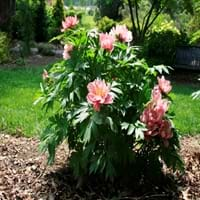Life Span
Perennial
Perennial
Type
Grass
Herbaceous Perennial
Origin
North America, Europe, Asia
Asia
Types
Bigleaf hydrangea, Hortensia, Smooth hydrangea, Oakleaf hydrangea, Annabelle
Bowl of Beauty, Laura Dessert
Habitat
Forest edges, Hillside, Woods
Dappled Shade, Shady Edge, Sunny Edge, Woodland Garden
USDA Hardiness Zone
Not Available
3-9
Sunset Zone
2a, 2b, 3a, 3b, 4, 5, 6, 7, 8, 9, 10, 11, 12, 13, 14, 15, 16, 17, 18, 19, 20, 21, 22, 23, 24
A1, A2, A3, 1a, 1b, 2a, 2b, 3a, 3b, 4, 5, 6, 7, 8, 9, 10, 11, 14, 15, 16, 17, 18, 19, 20
Habit
Upright/Erect
Upright/Erect
Flower Color
Blue, Dark Purple, Light Purple, Red, White
White, Light Yellow, Ivory
Flower Color Modifier
Bicolor
Bicolor
Fruit Color
Not Available
Not Available
Leaf Color in Spring
Dark Green
Green, Bronze
Leaf Color in Summer
Light Green
Green
Leaf Color in Fall
Dark Green, Gold
Green, Bronze
Leaf Color in Winter
Gold, Tan
Not Available
Leaf Shape
Oblovate
Lanceolate
Plant Season
Spring, Summer, Fall, Winter
Spring
Sunlight
Partial Sun, Partial shade
Full Sun, Partial Sun
Type of Soil
Clay, Loam, Sand
Loam
The pH of Soil
Acidic, Neutral, Alkaline
Neutral
Soil Drainage
Average
Well drained
Bloom Time
Early Summer, Summer, Late Summer
Spring, Late Spring
Tolerances
Wet Site, Salt, Soil Compaction
Not Available
Where to Plant?
Container, Ground
Container, Ground, Pot
How to Plant?
Seedlings, Stem Planting
Seedlings
Plant Maintenance
Medium
Medium
Watering Requirements
Not Available
Water during periods of drought
In Summer
Average Water
Lots of watering
In Spring
Moderate
Moderate
In Winter
Average Water
Average Water
Soil pH
Not Available
Neutral
Soil Type
Not Available
Loam
Soil Drainage Capacity
Not Available
Well drained
Sun Exposure
Not Available
Full Sun, Partial Sun
Pruning
Remove damaged leaves, Remove dead branches, Remove dead leaves
Remove damaged leaves, Remove dead branches, Remove dead leaves
Fertilizers
All-Purpose Liquid Fertilizer
High phosphorus
Pests and Diseases
Red blotch
Blight, Leaf spot, Stem spot, Viruses
Plant Tolerance
Wet Site, Salt, Soil Compaction
Drought
Flower Petal Number
Single
Double
Foliage Texture
Fine
Coarse
Foliage Sheen
Not Available
Glossy
Invasive
Not Available
No
Self-Sowing
Not Available
No
Attracts
Bees, Flies
Ants, Insects, Not Available
Allergy
Chest tightness, Diarrhea, Dizziness, Nausea, Vomiting
no allergic reactions
Aesthetic Uses
Not Available
Beautification, Showy Purposes
Beauty Benefits
Not Available
Heals cracked skin
Edible Uses
Not Available
Yes
Environmental Uses
Air purification
Air purification
Medicinal Uses
Fever, Kidney problems, Urinary tract problems
Analgesic, Anodyne, Antibacterial, anti-inflammatory, Antiseptic, Antispasmodic, Astringent, Carminative, Diuretic
Part of Plant Used
Flowers, Root
Root, Seeds, Stem
Other Uses
Not Available
Eaten in a broth, Powdered and mixed with tea
Used As Indoor Plant
Not Available
No
Used As Outdoor Plant
Yes
Yes
Garden Design
Not Available
Cutflower, Feature Plant, Foundation, Mixed Border
Botanical Name
DESCHAMPSIA cespitosa
PAEONIA lactiflora 'Laura Dessert'
Common Name
Tufted Hairgrass
Garden Peony, Chinese Peony
In Hindi
Hydrangea
Garden Peony
In German
Hortensie
Garten -Pfingstrose
In French
Hortensia
Jardin Pivoine
In Spanish
Hortensia
Jardín Peony
In Greek
υδραγεία
Κήπος Παιώνια
In Portuguese
Hortênsia
Garden Peony
In Polish
Hortensja
Garden Peony
In Latin
Hibiscus
AGLAOPHOTIS paradiso
Phylum
Not Available
Magnoliophyta
Class
Not Available
Magnoliopsida
Order
Not Available
Dilleniales
Family
Not Available
Paeoniaceae
Genus
Not Available
Paeonia
Clade
Not Available
Angiosperms, Core eudicots, Eudicots
Tribe
Not Available
Not Available
Subfamily
Not Available
Not Available
Number of Species
Not Available
Not Available
Importance of Tufted Hairgrass and Garden Peony
Want to have the most appropriate plant for your garden? You might want to know the importance of Tufted Hairgrass and Garden Peony. Basically, these two plants vary in many aspects. Compare Tufted Hairgrass and Garden Peony as they differ in many characteristics such as their life, care, benefits, facts, etc. Every gardener must at least have the slightest clue about the plants he wants to plant in his garden. Compare their benefits, which differ in many ways like facts and uses. The medicinal use of Tufted Hairgrass is Fever, Kidney problems and Urinary tract problems whereas of Garden Peony is Analgesic, Anodyne, Antibacterial, anti-inflammatory, Antiseptic, Antispasmodic, Astringent, Carminative and Diuretic. Tufted Hairgrass has beauty benefits as follows: Not Available while Garden Peony has beauty benefits as follows: Not Available.
Compare Facts of Tufted Hairgrass vs Garden Peony
How to choose the best garden plant for your garden depending upon its facts? Here garden plant comparison will help you to solve this query. Compare the facts of Tufted Hairgrass vs Garden Peony and know which one to choose. As garden plants have benefits and other uses, allergy is also a major drawback of plants for some people. Allergic reactions of Tufted Hairgrass are Chest tightness, Diarrhea, Dizziness, Nausea and Vomiting whereas of Garden Peony have no allergic reactions respectively. Having a fruit bearing plant in your garden can be a plus point of your garden. Tufted Hairgrass has no showy fruits and Garden Peony has no showy fruits. Also Tufted Hairgrass is not flowering and Garden Peony is not flowering . You can compare Tufted Hairgrass and Garden Peony facts and facts of other plants too.




